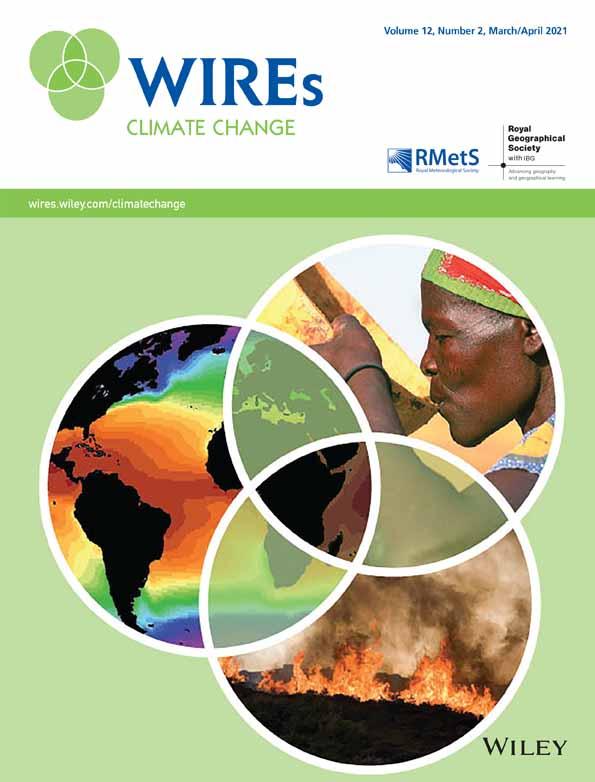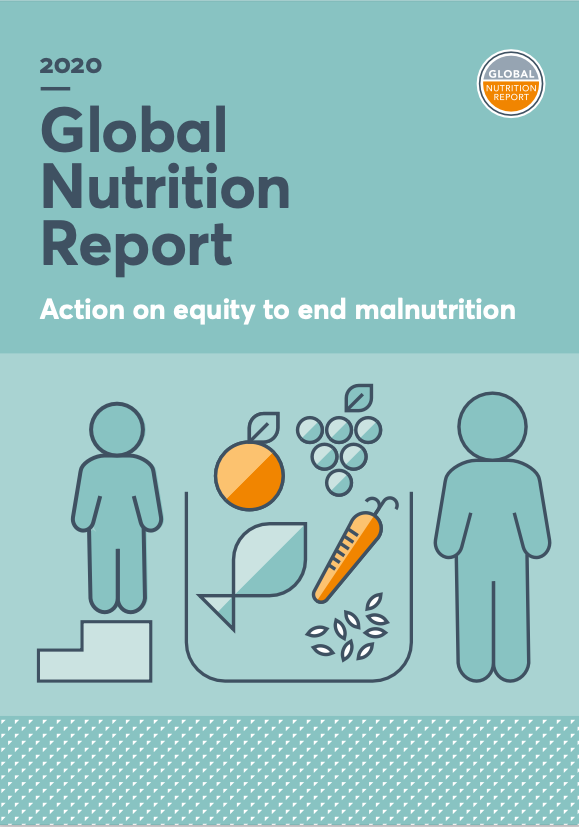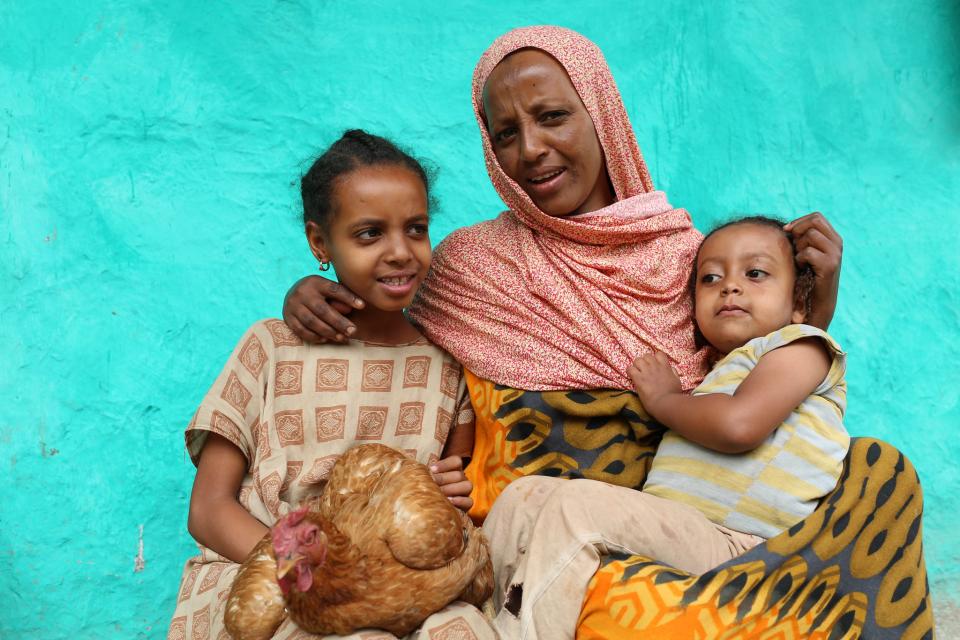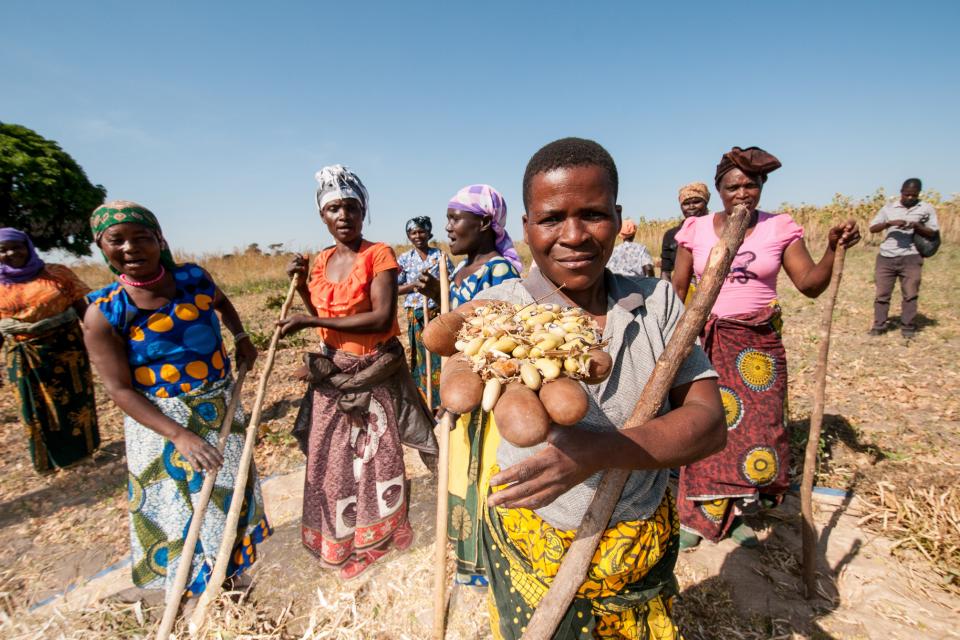Exploring how climate change interacts with gender and inequity to affect nutrition
 Photo: Georgina Smith/CIAT.
Photo: Georgina Smith/CIAT.
Key messages
-
The climate crisis is provoking increases of some kinds of malnutrition, leaving some people more vulnerable than others because of their gender or ethnicity, where they live, and what they do for a living (among other factors).
-
We need to understand how and why these inequalities exist so we can identify and implement equitable policies and programs.
-
One way to understand the how and the why is by using mixed-method and qualitative research, which can give us a holistic understanding of inequities that stem from gender and ethnic biases in society.
The climate crisis is generating a nutrition and health crisis and widening inequalities. In a recently published systematic literature review, my colleagues and I set out to understand how interactions between climate change, inequity and gender affect nutrition outcomes. Nutrition outcomes are about diversity in the diet, access to micronutrients, and the prevalence of undernutrition, obesity and overweight. It is also about non-communicable diseases, such as diabetes and heart disease, that are related to diet.
We wanted to explore what types of inequities have been identified, and how well the literature incorporated how and why these inequities exist. Types may include such things as inequitable distribution of nutrition outcomes because of a person’s gender, ethnicity or socioeconomic status. The mechanisms driving such types of inequities include the degree of fairness, justice and inclusion that exist in communities and societies.
Inequity as a factor in poorer nutrition
First, we mapped the ever-growing body of literature on frameworks that link climate change to health and nutrition outcomes against three dimensions of equity: fairness, justice and inclusion. The mapping exercise highlighted a clear gap in the research, namely identifying how issues of inequity shape nutrition outcomes in the context of climate change. We built a Climate Change and Nutrition Meta-Framework to illustrate the links (see figure).

Figure: The Climate Change and Nutrition Meta-Framework illustrates the routes by which climate change leads to poorer nutrition and health through lack of equity dimensions (fairness, justice and inclusion).
Second, we identified and mapped evidence from primary research onto the framework. We dug deeper, analyzing 46 studies to find out exactly what types of inequities were being identified, and how well the literature answered questions about how and why these inequities exist. This included considering how injustices such as discrimination and exclusion from decision-making feature (see boxed text below).
We found that although the literature identifies the types of inequities (most commonly based on place of residence, occupation and socioeconomic status), only a few explored the ‘causes of the causes’ as to what perpetuates these inequities.
Three equity concepts and how inequalities might play out in communities
Fairness relates to how unevenly causes, outcomes, costs or benefits are spread between groups due to differences in such characteristics as age, gender, disability, employment and housing. In an unfair outcome, poorer groups would bear a greater burden on any disruption to agricultural productivity caused by climate change. Those with poor market access or who live in areas that are marginal for agriculture would be even more burdened.
Justice relates to how norms, beliefs and institutions perpetuate biases and inequality. An unjust outcome would result from a failure of policy makers or those delivering programs to understand how women or other marginalized groups are made more vulnerable to the harms of climate change. Such vulnerability may be because they cannot access safety nets or additional care, or have the greater labor burden.
Inclusion relates to the ability to take part in making decisions and formulating policies. A failure of inclusion would result if minority groups are excluded from taking part in planning how to minimize climate change in their community, or are prevented from contributing traditional knowledge and practices as a solution.
Qualitative and mixed-method research produced better results
The research that was able to present a more holistic understanding of inequity used mixed-method or qualitative design, and focused on gender and ethnicity as the sources of inequity. Those that reported specifically on gender showed that the malnutrition of women occurred because women often:
- skip meals to feed other family members in times of hunger
- travel further for water and fuel
- lack or are denied access to productive resources and assets.
Perhaps we have a longer history of conducting research through an ‘equity lens’ that acknowledges the systemic processes that leave some groups such as women more vulnerable than the society in general. However, almost none of the literature went further than discussing how nutrition outcomes are distributed through a population, most often as part of quantitative modeling of climate change scenarios.
This is an important gap. Without research that connects inequitable nutrition outcomes with the processes and systems that drive them, it is harder to devise equitable solutions to minimizing the harms of climate change or adapting to it in ways that are appropriate to the needs of vulnerable people.
Bringing together several disciplines to answer complex social problems
Our team (Leah Salm, Nicholas Nisbett, Laura Cramer, Stuart Gillespie and Philip Thornton) shows the importance of bringing together multiple disciplines. We brought climate, social science and nutrition, and methodological expertise to our review. We see this as essential to tackling interrelated challenges that influence each other in numerous ways.
Our work helps demonstrate how it is possible to bring together the critical issues of malnutrition, climate change and inequity. In doing so, researchers can learn from what is already out there and highlight gaps. It is also important to share research results with policymakers.
This research adds to the growing amount of literature calling for health and nutrition expertise to be incorporated into climate policy. And it calls for the inclusion of the voices and experiences of those already experiencing this dual climate and nutrition crisis.
Suggested citation:
Salm, L. 2021. Exploring how climate change interacts with gender and inequity to affect nutrition. CGIAR GENDER PLATFORM Evidence Explainer. Nairobi, Kenya: CGIAR GENDER Platform. https://hdl.handle.net/10568/114488.
References

How climate change interacts with inequity to affect nutrition
, , , , . How climate change interacts with inequity to affect nutrition. WIREs Clim Change. 2021; 12:e696. https://doi.org/10.1002/wcc.696
‘Triple wins’ or ‘triple faults’? Analysing the equity implications of policy discourses on climate-smart agriculture (CSA)
(2018) ‘Triple wins’ or ‘triple faults’? Analysing the equity implications of policy discourses on climate-smart agriculture (CSA), The Journal of Peasant Studies, 45:1, 150-174, DOI: 10.1080/03066150.2017.1351433

2020 Global Nutrition Report
2020 Global Nutrition Report: Action on equity to end malnutrition. Bristol, UK: Development Initiatives.
Climate change and variability: What are the risks for nutrition, diets, and food systems?
Fanzo, Jessica; McLaren, Rebecca; Davis, Claire; and Choufani, Jowel. 2017. Climate change and variability: What are the risks for nutrition, diets, and food systems? http://ebrary.ifpri.org/cdm/ref/collection/p15738coll2/id/131228


